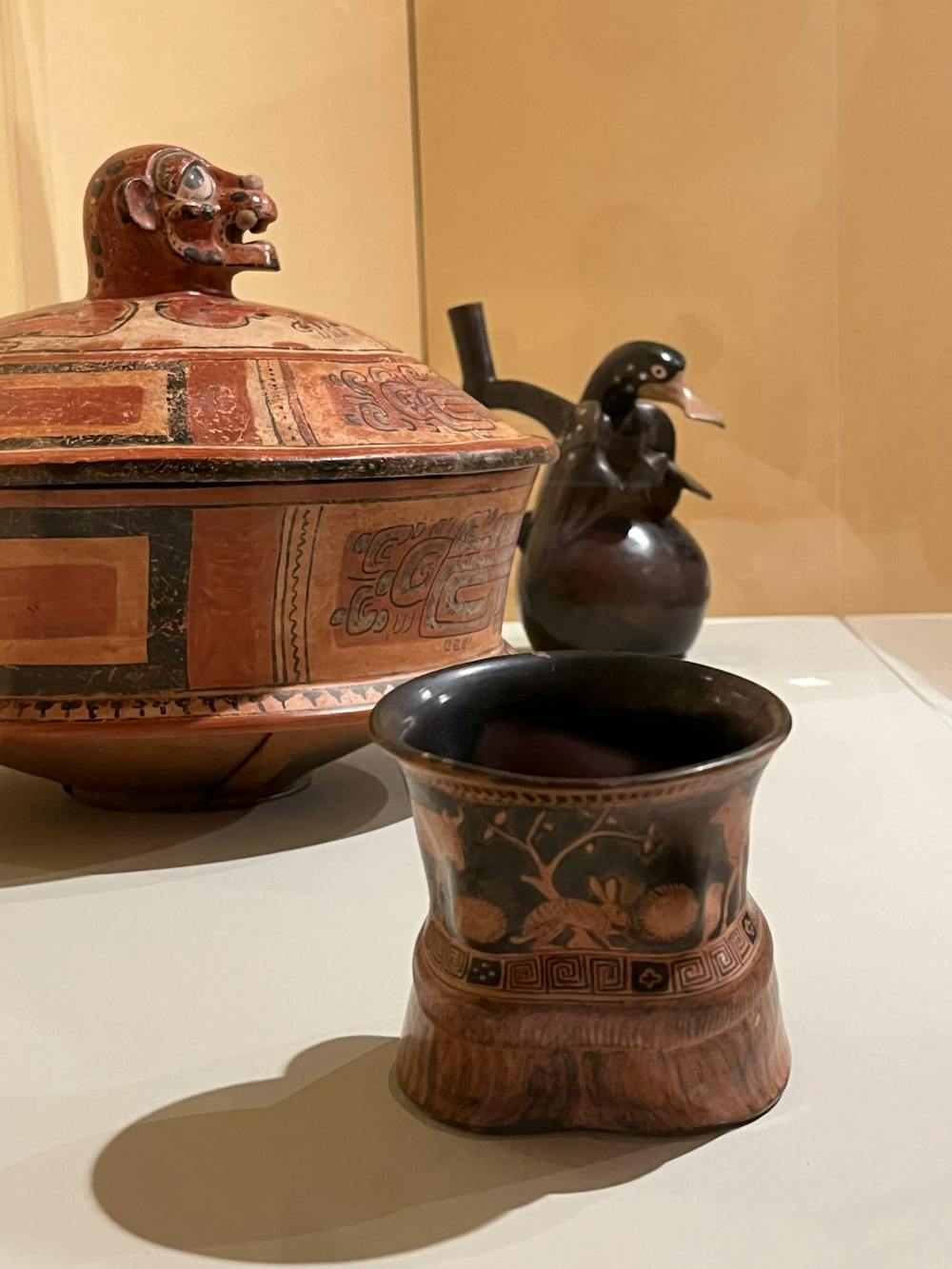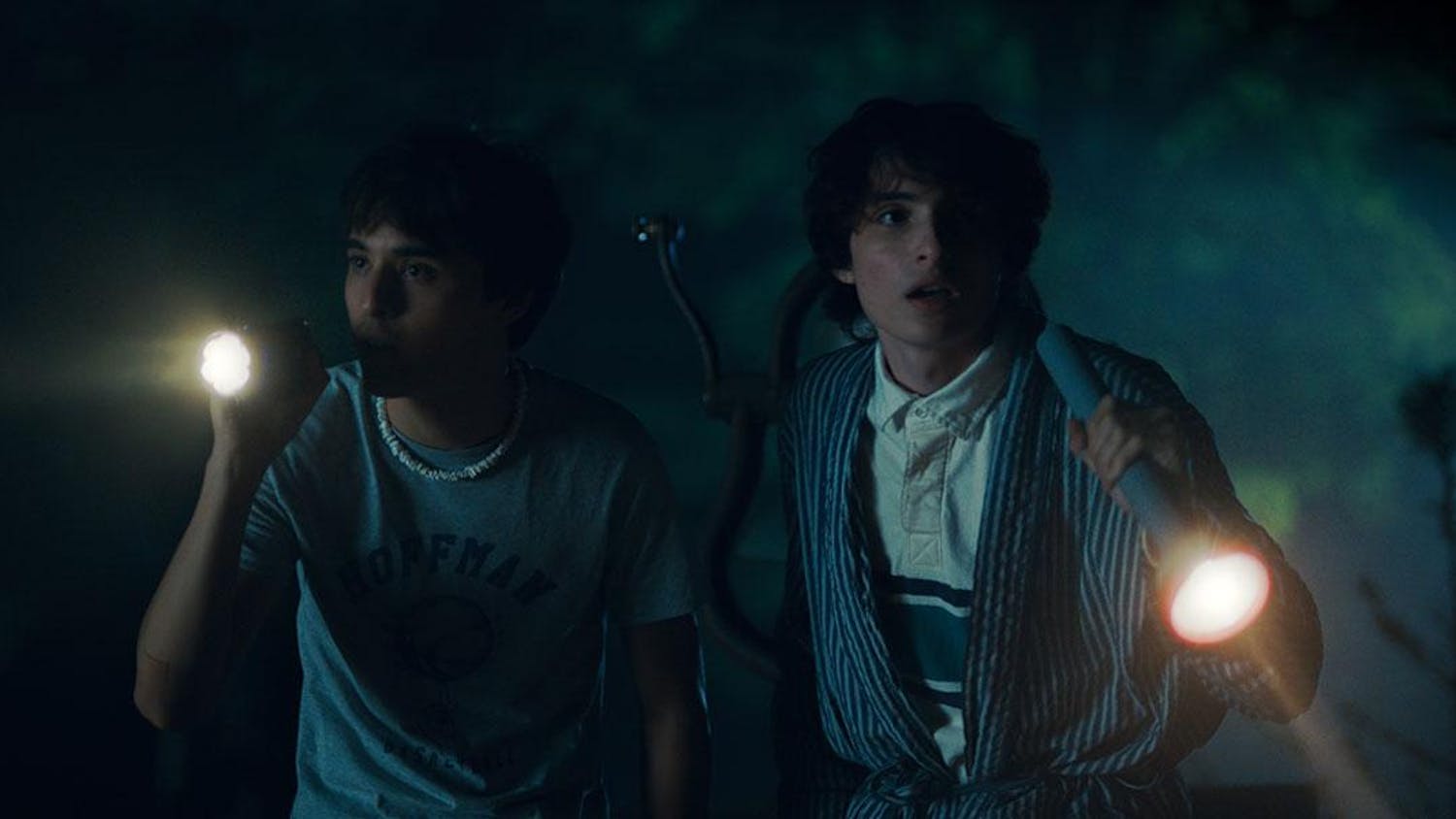Museum exhibits are often places of quiet, personal reflection. Visitors drift quietly between pieces, observe from a distance and then shift their focus onto the next case or gallery. From its first display, the “Picture Worlds: Greek, Maya, and Moche Pottery” collection at the Michael C. Carlos Museum defies that idea. It invites its guests to talk to one another about the art, touch the pieces’ replicas and carry the stories they see out into the world.
Organized by the J. Paul Getty Museum and co-curated by Associate Curator at the Getty’s department of antiquities David Saunders and Associate Professor of Art History Megan E. O’Neil, the collection is the first time that a museum has brought the painted pottery of Greek, Maya and Moche into conversation with one another. Narratives of holy figures, heroes and humans engaging in daily tasks embellish these vessels, which were once used for storage, eating and drinking. Though the stories vary between cultures, the method of storytelling via pottery is shared between them. The exhibit suggests that no one culture is superior to another, which is a choice that makes it even more fascinating to compare.
The initial display case of each room introduces guests to pieces from each culture before presenting the rest of the pottery individually throughout the space. By combining the works, the gallery invites guests to see the art both juxtaposed and connected. It also encourages visitors to converse using the questions and prompts on the labels. Why is the story depicted on one vessel in particular? What do the images convey based on their arrangement on the pottery? Though the other cases in the room only contain one piece each, the images from the first case are painted on the walls, reminding viewers of their initial connection.
The first section is focused on the “who” of these narratives — the makers and users of the vessels and what these stories reveal about the creators. One Moche vessel, discovered in the tomb of a young woman, portrays a curer healing a mother’s baby, hinting at the elevated status of the deceased and her skill at delivering remedies. Rather than sculpting another epic or legend, the artist intentionally depicts an everyday scene that evokes who the woman was in life.
These objects and ideas flow into the second room where the exhibit’s heart lies. On the left, a book nook and bean bags rest beside a rotating table inscribed with more discussion prompts, encouraging conversation and contemplation.
The other theme of this room is hybrid creatures, with each piece containing creatures from each culture’s mythology that serve as visual metaphors. To the right, an oil jar offers a humorous twist on the otherwise lamentable story of Oedipus. By depicting an amusing satyr trying to solve the riddle of the Sphinx instead of the tragic hero himself, we understand that the image is likely supposed to evoke humor rather than sorrow.
In the adjacent case, the label of a Moche stirrup-spout vessel with lima bean warriors asks guests to consider what the story being told on the pottery can teach us about its use. Does the battling indicate that its contents may be poisonous, or could the terracotta be a threat when given from one person to another? Such images convey messages that might have otherwise been inexpressible.
The third room introduces the collection’s second section, which focuses on stories and images. The largest case contains pottery depicting brief moments from legendary tales of the three ancient cultures. Each piece is energetic and prepares visitors for the rest of the items they will see. Famous myths frequently painted on pottery are illustrated on each one, including the Moche stories of the deity Wrinkle Face, the Trojan War and the Maya Maize God’s birth. The repetition of this imagery demonstrates how different versions gained and lost popularity in these civilizations, providing insight into the shifting values their inhabitants might have held.
The combination of scenes also explores clarity versus ambiguity in storytelling. One depiction of Wrinkle Face forces the viewer to rotate the pottery piece to see the entire story. Meanwhile, a Greek plate hanging on the wall sports a scene not actually in Homer’s “The Iliad,” but the names carved beside the battling warriors imply that the artist must have believed it to be.
A fully-covered Maya corn tamale serving platter would have hidden an image of the Maize God, allowing its users to gradually witness his rebirth as they eat more and more food.
In the middle of the room, a table offers guests the opportunity to touch and hold replicas of these pieces to experience the storytelling in a tactile manner.
The final room of the exhibit, located to the right of the entrance, makes Carlos’ display of “Picture Worlds” unique. Unlike the original Getty presentation, the exhibit features oil paintings from five contemporary Mayan artists. The works contain an explosion of vivid colors that create a contrast from the pottery’s earthly tones. Though the difference between the two mediums is sharp, these pieces are still tied to the creation of the pottery featured in the rest of the exhibit. They also contain their own “picture worlds,” telling entire narratives about their culture, offering expressive possibilities and understandings.
By referencing this storytelling tradition through depictions of the present, they indicate what their communities might look like going forward, an effect that ties together the themes of the entire exhibit: How and why have certain stories been told in the past, and what stories will we bring into the future?










